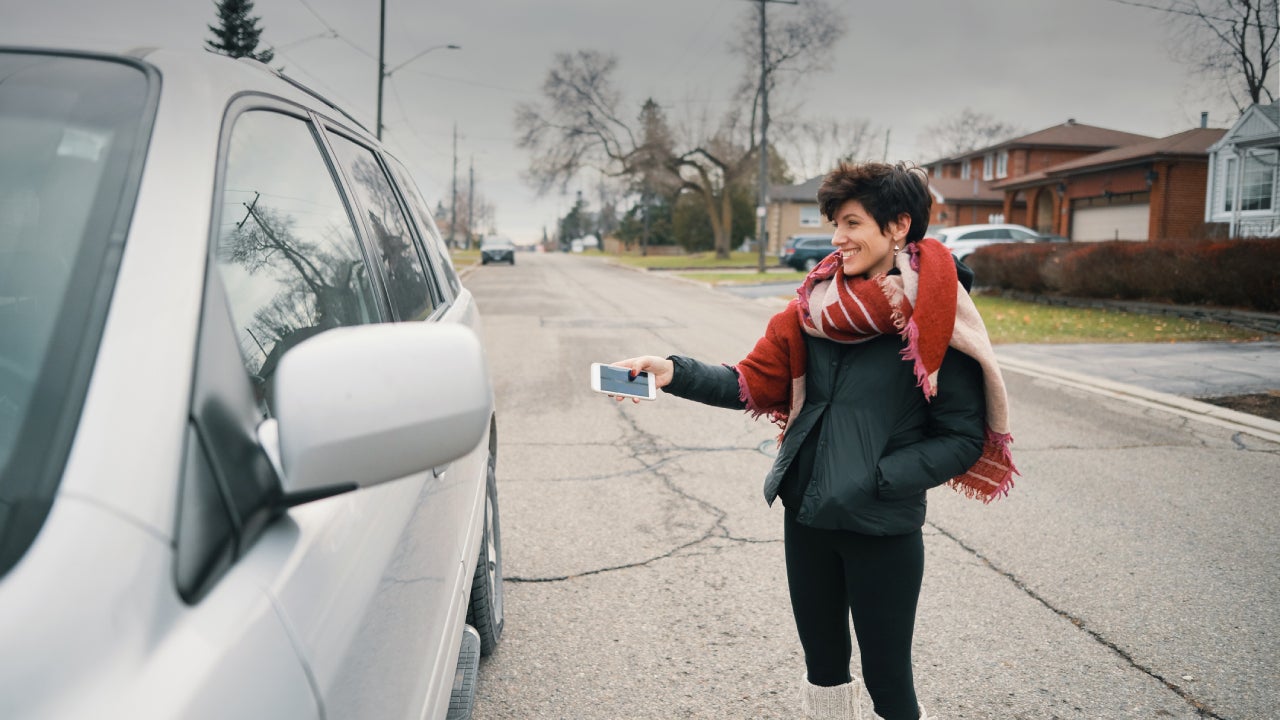Does auto insurance follow the car or the person?



Car insurance can be complicated, since a policy may contain multiple types of coverage and have rules regarding who is covered and in what cases the auto insurance covers the car or the driver. One general rule that is good to understand is this: in most cases, car insurance stays with the car, not the driver. What does that mean for you? Usually, this means that if you give someone permission to use your car, your policy will cover them while they’re behind the wheel if they are in an accident or experience any kind of vehicle mishap.
Having said that, however, it’s important to note that every policy is unique, and is based on multiple factors as well as state insurance law. Bankrate’s insurance editorial team took a deep dive into the nature of car insurance policies to help you understand the differences between drivers insurance vs. car insurance.
Is the car insured or the driver?
When you purchase an auto insurance policy, you may be wondering if the car is insured or the driver. The policy documents will indicate the vehicle or vehicles that are covered. It will also detail drivers who are covered by the policy, as well. That’s easy enough to understand if you are driving your own car.
But what if another person—say, your neighbor—asks to borrow your car while theirs is in the shop? In most cases, your existing policy will cover them, and if they have an accident while driving your car, your policy will pay out on any approved claims. But this is not always true, and the best way to know if it works in your case is to read your policy documents, or make a quick call to your local agent.
You may also have coverage through your own policy if you, instead, are driving your neighbor’s car. Again, however, this will depend on the wording and coverage levels of both your own policy and your neighbor’s policy. For example, if they do not have collision coverage on their policy, your own collision insurance might be used to pay for damages to the car if you’re in an accident.
Does my car insurance cover a rental car or car-sharing service?
Many car rental agencies offer the opportunity to purchase rental car insurance when you pick up your rented vehicle. In some cases, this may be an unnecessary expense, because it’s possible your own policy includes coverage for a car rental. Keep in mind, however, that some personal car policies do not cover using your car for work purposes, so if you are renting a car for business, you might not be covered. Again, the only way you can know for sure is by reading the fine print on your policy.
Car-sharing services like Zipcar or ridesharing services such as Uber may also have you wondering about coverage. Although rules for these services vary from state to state, there is usually some form of insurance offered to hosts and renters. That coverage may be minimal, however, and may only include liability insurance. In some cases, you may want to talk to your insurer about a business auto insurance policy if you are renting your car out through a service.
Adding other drivers to a car insurance policy
In most cases, members of your household who have driver’s licenses will be named on your policy. Your insurer expects that anyone who lives in your home—your spouse, older children or other relatives—is likely to drive the vehicles that are named in the policy. When you purchase your policy, you may also be asked about other drivers who routinely drive your car. For example, if your in-laws live next door and borrow your car every few days while they’re watching your children, your insurer may want to include them on the policy. This may not be necessary, however, for those who occasionally, but not regularly, borrow your car with permission.
How do I add a driver to my auto insurance policy?
If a friend or relative is regularly borrowing your vehicle, it may make sense to add them to your policy. This might be the case if you have a regular childcare worker, for example, who uses your car, or an older relative who no longer owns their own vehicle. It’s not difficult to do. In most cases, it can be handled simply by calling your local agent or logging on to your account on your insurer’s website. Have at hand the following pieces of information:
- The name of the driver you’re adding
- Their social security number
- Their date of birth
- The date they were first licensed
- Their driver’s license number
One factor to note: if the person you’re adding does not have a great driving record, your rate may increase when they’re added to your policy. For example, if they have had one or more moving violations, multiple speeding tickets or a DUI/DWI. If that is the case, you may want to shop around to find the cheapest possible coverage.
Exceptions to the requirement for adding drivers
Once in a while, insurers will write a policy that excludes an individual from driving. This is most often the case if the person is a high-risk driver with multiple infractions or DUIs. In this case, neither the individual nor the car would be covered if you allow them to use your vehicle despite the exclusion.
Another uncommon but possible circumstance is the named driver policy. With a named driver policy, anyone who is not specifically named in the policy documents is not covered, even if their borrowing of the car is infrequent. In this case, you would not want to loan your car to anyone, even if it was a one-time event since they would not have coverage.
Most auto policies do include permissive use. This concept means that unlisted drivers will have coverage while they are driving the policyholder’s vehicle, as long as they have the policyholder’s permission to use the vehicle. This would even include those not named on the policy.
If the occasional user of your car is a member of your household, however, such as a newly licensed teen driver, it is a good idea to add them to your policy, even though this may increase the cost of your coverage.
Considerations if you’re regularly sharing vehicles with another driver
As you may have noted, there is some wiggle room in determining the difference between an occasional user and someone who is a regular user of your car. Knowing when you should have an occasional user transferred to a named driver on your policy may seem tricky. If you’re not sure, it’s best to ask your agent.
Generally, though, if a person’s use of your car is regular—say, every Tuesday and Thursday—you may want to consider adding them to your policy. For example, let’s say you and your cousin work together, and you drive together to work, alternating cars. You might want to add them to your policy. A quick call to your agent can help you determine if this is a good idea. State regulations and your insurer’s own policies may play a role in determining the efficacy of adding them.
What happens if someone gets in an accident in my car?
That depends entirely on your policy’s fine print, and whether or not they are included in your policy through permissive use. If your policy does have permissive use, you have given them permission to use your car, and you have full coverage, which includes liability, collision and comprehensive, then you should be protected.
If your policy only has minimum coverage, which generally includes just bodily injury liability and property damage liability, they will only be covered to the extent of the policy’s limits: that is, if they are at fault, your policy will cover the other party’s medical bills and damages. In that case, without full coverage, your own car’s damages would not be covered by the policy.
How does borrowing another person’s car impact auto insurance rates in an accident?
As we’ve noted above, car insurance generally links to the car, not the driver. That means that your policy will be called into play if another person has an accident while driving your car. In some cases, the other person’s policy may be used as secondary insurance, but in an at-fault accident, yours will be the primary insurance policy that will pay for damages.
This could result in an increase in your premium rate, unless you have accident forgiveness as an endorsement on your policy, in some cases. Any accident—no matter who is driving your vehicle—is likely to cause an increase in your rate, especially if you or whoever is driving is found to be at fault.
How do primary and secondary insurance work in case of an accident involving a borrowed car?
Following an accident that occurs while someone has borrowed your car, you should submit your claim to your own insurer first. In this case, it is considered the primary insurance policy, and an approved claim will be paid up to your limits of coverage.
But what if the costs involved in the accident are more than your coverage limits? In that case, the driver’s policy may be used as the secondary insurance, and the remaining costs could be submitted as a claim to them.
Types of auto insurance coverage options
Auto insurance policies can include liability coverage, as well as collision and comprehensive coverage. Let’s look at each coverage and whether or not it extends to other drivers who are driving your car. Keep in mind that it always depends on the policy language.
- Liability coverage – This can cover damage to other cars and property, as well as injuries for drivers and passengers in other cars. But this coverage offers no protections for damage sustained to your own vehicle or any of your own medical bills. If your policy allows for permissive use and you let someone else borrow your car, liability coverage should cover damages to others that result from your car, but not your car or the driver of your car.
- Collision coverage – This covers damage to your vehicle sustained by a moving accident, such as a wreck with another car. If your policy allows permissive use and someone else was driving your car, this coverage can pay for your car repairs, even if you weren’t driving at the time.
- Comprehensive coverage – This will typically cover damage to your vehicle from events that do not qualify as moving accidents, such as vandalism or natural disasters. Since many comprehensive claims do not involve a driver, this coverage is more associated with the vehicle and not the specific driver. An exception to this would be if you or someone else is driving and hits a deer, in which case your policy likely covers damages for you, your household or permissive-use drivers.
- Medical payments or personal injury protection – Some auto policies include coverage that pays for your medical bills if you’re injured in a wreck. Although it depends on the policy, this coverage generally wouldn’t extend to other drivers who use your vehicle when you’re not present.
When car insurance follows the driver
You may wonder if your insurance covers you if you drive someone else’s car. In most cases, if you are driving someone else’s car, the car owner’s policy will generally be used to pay claims related to an accident while you are behind the wheel. One exception to this can be rental cars, but this depends on your policy and any restrictions on it.
If you are in an accident while driving another person’s car, and their insurance is not enough to cover damages, your own policy may be used to pay for amounts over their limits. The car owner’s policy would be the primary insurance, while your own policy would be secondary. This might happen if their liability insurance has a low limit, or if there is damage to the car and they lack collision insurance.
Another instance where car insurance follows the driver is if you purchase a new car and it has not yet been added to your policy. This should not be a very long period, since switching your insurance to the new vehicle is one of the first tasks you have as a new car owner.
Frequently asked questions
-
-
Permissive use means that you have given another individual permission to use your car. In most cases, when this occurs the person and your vehicle will be covered by your insurance policy if they are involved in an accident. Non-permissive use indicates that someone is driving your car who does not have permission to use it. In this case, you may not be held accountable for any damage they cause while driving it. The driver’s policy, in that case, will serve as primary insurance. If they don’t have insurance, or if a thief takes your vehicle and damages it, you may still need to file a claim with your own company.
-
In many cases, your personal policy may not cover you if you use your car for work purposes. If you regularly use your car for work, you may need to invest in a business auto policy. There is some gray area here, however. If you use your car once in a while to, say, visit a client, your personal policy may cover you. But if the use is frequent and consistent, you will need a business policy to give yourself adequate protection.
-
You may also like

Surprising ways you could save on your auto insurance


Car insurance for smart cars: Average premiums by model

